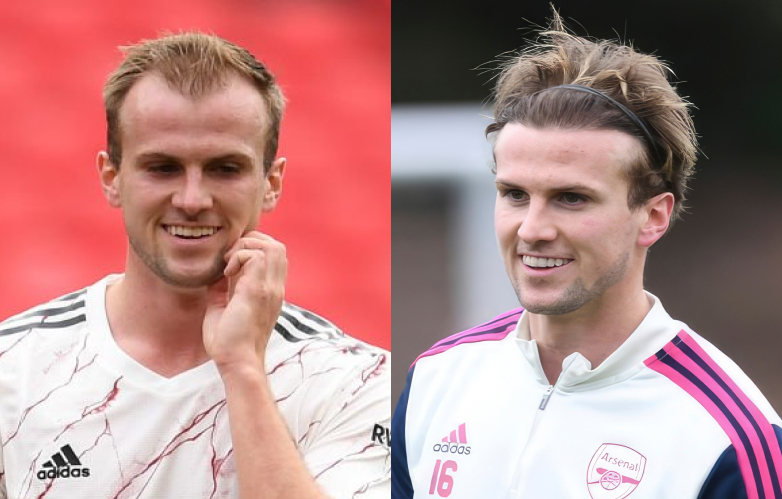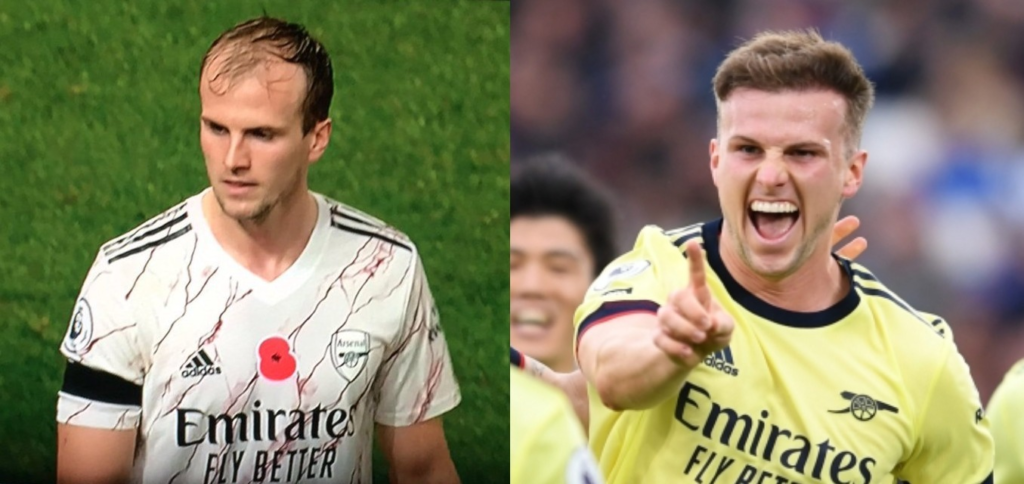
Professional athletes face unique pressures, both on and off the field. One Arsenal star made headlines not just for his defensive skills, but for openly addressing a personal challenge many men encounter.
The defender joined the Gunners in 2016 as a promising young talent. By his early 20s, he'd already won two FA Cups while establishing himself as a reliable center-back. However, progressive hair loss became an increasingly visible struggle during his rise in professional football.
In 2021, he chose to undergo an FUE hair transplant at London's prestigious Wimpole Clinic. The procedure marked a turning point, restoring both his hairline and confidence. His journey highlights how modern solutions can address what was once considered an inevitable part of aging for many men.
This article explores the technical aspects of the treatment, its impact on mental wellbeing, and why athletes increasingly opt for such transformations. We'll examine the timeline from early signs to 2024 results, offering insights for anyone considering similar steps.
Few athletes experience both career highs and personal struggles as visibly as this Arsenal defender. His journey from Bolton Wanderers to the Emirates Stadium mirrors a generation of players balancing professional ambition with very human challenges.

After debuting on loan at Bury FC in 2015, the defender quickly caught attention. His 30 appearances for Bolton showcased a maturity beyond his young age. By 2016, Arsenal secured his signature—a pivotal moment in his career.
The three-year contract, later extended to 2024, proved the Gunners’ faith. Early photos reveal a confident player with a thick, Norwood 1 hairline. Few predicted how swiftly that would change.
Team photos between 2016 and 2020 tell a silent story. By 23, visible thinning began—a shock for someone in the public eye. Male pattern baldness affects 25% of men under 30, yet few discuss its psychological toll.
For athletes, early fame amplifies the pressure. Contract extensions signaled stability, but off-field confidence faced a different battle. His openness later helped normalize conversations about hair restoration in sports.
Male pattern baldness affects millions, but few face it under constant public scrutiny. For athletes, thinning hair isn’t just a personal concern—it’s a visible change analyzed by fans and media alike.
By age 26, the defender reached Norwood Stage 4 baldness—a rapid progression from Stage 2 in just four years. Genetics play a key role in male pattern hair loss, with 90% of men experiencing it by 50.
For those under 30, like many athletes, the impact is magnified. Studies show 16% of 18–29-year-olds have significant hair loss, often linked to stress and hormonal shifts.
In a 2021 Instagram post, he admitted: "I struggled so much with my hair and self-confidence." NHS data reveals 40% of men with hair loss report anxiety, worsened by public visibility.
Athletes face unique pressures. Reduced interview participation and obsessive styling habits became coping mechanisms. Social media comments shifted from critiques to support post-transplant, highlighting changing attitudes.
The psychological toll at a young age underscores why many now seek solutions. For professionals in the spotlight, restoring confidence is as vital as physical recovery.
London’s elite clinics are changing how sports professionals approach hair loss solutions. For athletes, selecting the right provider and technique ensures natural results without disrupting careers. The Arsenal defender’s choice reflects a growing trend among public figures prioritizing both aesthetics and performance.

Renowned for serving high-profile clients, Wimpole Clinic rivals Harley Street’s prestige. Their hair transplant specialists combine medical expertise with discretion—a priority for athletes. Base prices start at £3,499, significantly below the UK average of £4,820.
Key advantages include:
Follicular Unit Extraction involves extracting individual follicles with micro-punch tools. These grafts are then implanted into thinning areas. The minimally invasive procedure ensures faster healing—critical for athletes.
Teammate Aaron Ramsdale’s *"new hairline"* joke post-match subtly revealed the transformation. Such banter highlights growing acceptance in locker rooms.
This range effectively addresses Norwood Stage 4 patterns. Surgeons assess donor area density to avoid overharvesting—a risk with early intervention. For athletes, balanced coverage and future loss prevention are key.
"The goal isn’t just density today, but sustainable results for decades."
Visual evidence often speaks louder than words when it comes to hair restoration success. Side-by-side before and after photos reveal the dramatic transformation from thinning to full coverage.
Team portraits from 2020 showed advanced Norwood 4 patterns—receding temples and crown thinning. Post-transplant images demonstrate how 2,500-3,000 grafts rebuilt a natural-looking hairline.
Key visual changes include:
Shaved heads in June 2021 marked the procedure's start. By December, training session photos showed visible sprouting. His West Ham header goal at 12 months displayed full results.
The growth phases followed standard FUE patterns:
Specialized shampoos and PRP therapy maintained these results. The psychological boost became evident through increased media interactions and on-pitch confidence.
These documented photos prove modern restoration techniques can reverse even advanced hair loss when performed by experts.
Modern hair restoration blends medical precision with athletic performance needs. Advanced techniques now address both aesthetic goals and the physical demands of professional sports. This dual focus ensures natural-looking results that withstand rigorous training environments.
Follicular Unit Extraction (FUE) outperforms traditional methods for active individuals. The technique extracts individual grafts using 0.8mm micro-punches, leaving no linear scars. This matters for athletes who frequently wear short hairstyles.
"Our climate-controlled recovery rooms optimize healing for sweat-prone patients."
Sports professionals require customized recovery protocols. The first 14 days prohibit heading drills or helmet use to protect grafts. Antimicrobial shampoos prevent infection while maintaining scalp hygiene.
Modified training regimens include:
FIFA studies confirm most players head the ball 12 times per match—a risk factor during early healing. By month three, full contact training resumes with no restrictions.
This scientific approach to hair restoration ensures athletes regain confidence without compromising performance. The combination of advanced technique and sport-specific aftercare creates lasting transformations.
Understanding the financial aspects of hair restoration helps potential patients make informed decisions. Prices vary based on location, technique, and clinic reputation. While UK options offer convenience, international alternatives provide significant savings.
UK hair transplants typically include:
Wimpole Clinic’s £3,499 entry price covers 1,500 grafts. Higher costs reflect advanced techniques like FUE2 SAFE, ensuring 98% graft survival.
Turkey averages £1,500–£2,500 for the same procedure, attracting medical tourists. Top clinics like Heva and Worbimed offer:
"Celebrities choose Turkey for quality at half the cost. Grafts run £1.20/unit vs. £2.50 in the UK."
Prescription regimens (finasteride, minoxidil) are often included, boosting long-term hair transplant success.
Modern hair restoration has redefined confidence for athletes worldwide. The Arsenal defender’s 3,000-graft procedure delivered visible results within 12 months, proving advanced techniques work under scrutiny.
Interviews reveal renewed confidence post-transplant, echoing studies linking hair transformation to mental wellbeing. Unlike peers who hide procedures, his openness sparked locker-room acceptance.
For professionals balancing image and performance, clinics now offer tailored solutions. Whether tackling aerial duels or interviews, restored hairlines impact life beyond aesthetics.
This journey underscores a truth: modern solutions turn insecurities into success. Verified clinics make such transformations accessible—proving every loss can be regained.
